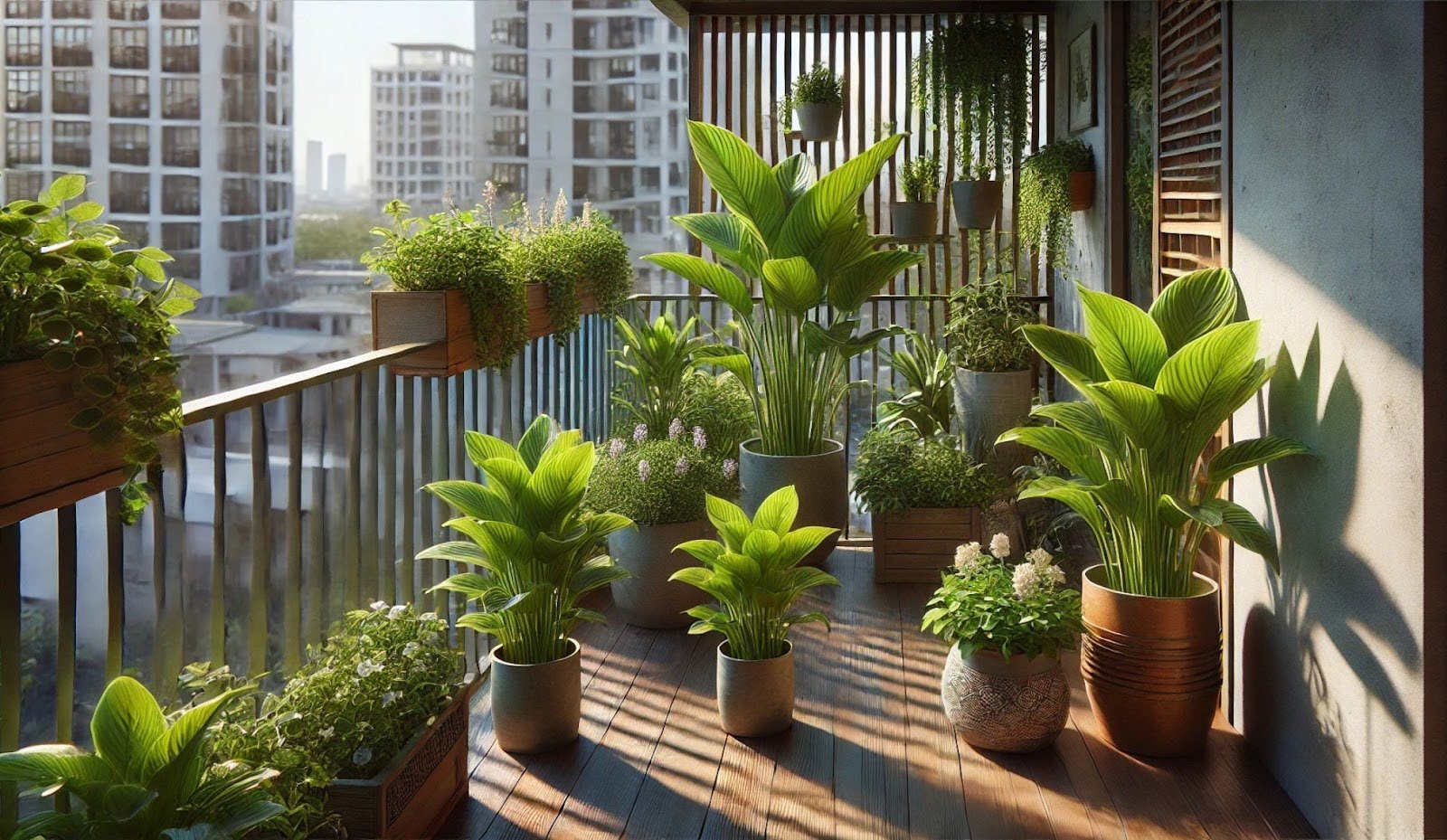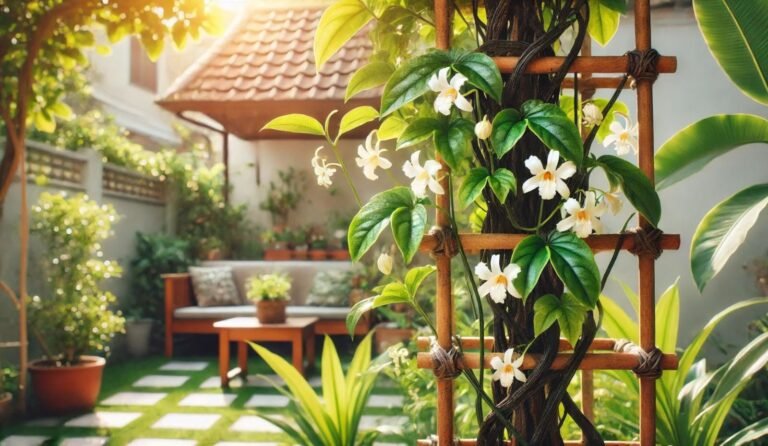Wild Ginger Plants Indoors: How to Keep Them Thriving
Wild ginger plants are the secret weapon your shady garden’s been missing. These lush, low-maintenance beauties don’t just look amazing—they spread like a dream, creating a dense, vibrant ground cover that keeps weeds at bay.
Whether you’re planning to spice up your backyard or add a touch of woodland charm indoors, wild ginger has you covered. Plus, they’re tougher than they look, thriving even in the trickiest spots. Ready to discover why gardeners swear by them? Let’s dig in!
What Are Wild Ginger Plants?
Wild ginger plants are members of the genus Asarum, which includes various species known for their heart-shaped leaves and creeping, ground-hugging growth. These plants are native to different parts of the world, but North America and Asia are particularly rich in wild ginger varieties. They thrive in woodland settings, where the dappled sunlight and rich, moist soil create the perfect environment for them to flourish.
Contrary to what the name might suggest, wild ginger plants are not related to the culinary ginger (Zingiber officinale) that you might be familiar with. Instead, their name comes from the ginger-like aroma released when their rhizomes are crushed. While wild ginger roots have been historically used in herbal medicine by Native Americans and early settlers, they’re not recommended for culinary use today due to potential toxicity.
Popular Varieties of Wild Ginger Plants
There are several varieties of wild ginger that you might come across, but the most popular ones are Canadian wild ginger (Asarum canadense) and European wild ginger (Asarum europaeum). Both have similar growing habits and requirements but differ slightly in appearance and cold hardiness.
Canadian Wild Ginger (Asarum canadense)
This variety is native to eastern North America and is known for its distinctive heart-shaped leaves and fuzzy, hairy stems. It’s a hardy perennial that thrives in USDA zones 4 to 7 and is particularly suited to colder climates. The small, cup-shaped, maroon flowers often go unnoticed as they hide beneath the foliage, but they add a unique charm to the plant.
European Wild Ginger (Asarum europaeum)
European wild ginger, on the other hand, boasts glossy, evergreen leaves that form a dense mat, making it an attractive ground cover year-round. Native to Europe and parts of Asia, it’s a bit more tolerant of mild climates, thriving best in USDA zones 4 to 8. Its flowers are less prominent but still offer that signature deep-purple hue.
Heartleaf Wild Ginger (Hexastylis spp.)
Heartleaf wild ginger is native to the southeastern United States and features glossy, leathery leaves that are typically mottled with white or silver patterns. It’s another great choice for shady areas and grows well in zones 5 to 9.
Why Should You Grow Wild Ginger Plants?
Wild ginger plants aren’t just about aesthetics—they offer a range of benefits that make them a worthwhile addition to any garden or indoor plant collection.
1. Aesthetic Appeal and Versatile Use
Wild ginger plants have an undeniably attractive look. Their lush, heart-shaped leaves spread to form a dense, emerald-green carpet that can brighten up any shaded area. Whether planted under trees, around shrubs, or as a border for pathways, their foliage adds texture and life to the space. Indoors, they bring a touch of natural charm to any room, thriving in low-light conditions that other houseplants may struggle with.
2. Excellent Ground Cover
One of the primary reasons gardeners love wild ginger is its ability to act as an effective ground cover. The plants spread through rhizomes, gradually creating a thick, weed-suppressing mat that helps retain soil moisture and reduce erosion. Once established, they require minimal maintenance and will fend off competing weeds with ease.
3. Wildlife Habitat
Wild ginger plants are also a valuable part of the local ecosystem. Their flowers, though often hidden under leaves, attract small insects and native pollinators. The dense foliage provides shelter for various small creatures, contributing to a biodiverse garden.
4. Indoor Gardening Potential
While less common as a houseplant, wild ginger can thrive indoors if given the right conditions. They add a woodland vibe to your indoor spaces and pair beautifully with ferns and other shade-loving plants.
How to Grow Wild Ginger Plants
Growing wild ginger plants might sound like a daunting task, but once you understand their preferences and needs, it’s actually quite straightforward.
Choosing the Right Location
The most crucial factor for wild ginger is shade. These plants naturally thrive in low-light conditions, so find a spot that mimics a forest floor—under trees, along shady garden borders, or even on the north side of your house. If planting indoors, choose a spot away from direct sunlight. A bright, indirect light source or low-light area works well.
Preparing the Soil
Wild ginger plants prefer rich, moist, and well-draining soil. To mimic their natural habitat, amend the soil with plenty of organic matter such as compost or leaf mold. A slightly acidic to neutral pH (around 5.5 to 7) is ideal. Before planting, loosen the soil to a depth of about 6 inches, incorporating compost or well-rotted manure. This ensures the roots can establish quickly and grow vigorously.
Planting Wild Ginger Outdoors

Planting wild ginger outdoors is a relatively simple process. Begin by digging a hole large enough to accommodate the plant’s root system, typically around 3 to 4 inches deep. Space multiple plants about 12 inches apart to allow them room to spread. Place the plant in the hole and cover the roots with soil, pressing down gently to eliminate air pockets. Water thoroughly after planting to help settle the soil around the roots.
Indoor Planting Tips
When planting wild ginger indoors, choose a pot with good drainage holes to prevent water from accumulating at the bottom. Use a well-draining potting mix with added organic matter for moisture retention. Plant the rhizomes just below the surface of the soil and water lightly. Indoor wild ginger thrives in low to moderate light conditions, so avoid placing it directly in a sunny window.
Wild Ginger Plant Care
Watering and Moisture Management
Wild ginger prefers consistent moisture, especially during its establishment period. Aim to keep the soil moist but not soggy. A thick layer of mulch helps retain soil moisture and reduces the need for frequent watering.
Fertilization
While wild ginger isn’t a heavy feeder, an annual application of compost or a slow-release organic fertilizer in early spring can encourage lush growth. Avoid chemical fertilizers that may burn the delicate roots.
Pruning and Maintenance
Pruning is generally unnecessary, but you can trim back any damaged or yellowing leaves to maintain a tidy appearance.
Propagation Methods
1. Division
The easiest and most reliable way to propagate wild ginger is by division. Simply dig up a mature clump in early spring or fall and carefully separate the rhizomes, ensuring each piece has at least one healthy shoot. Replant immediately.
2. Seed Propagation
While possible, growing wild ginger from seed can be slow and unpredictable. Harvest seeds from mature plants and sow them immediately, as they have a short viability period.
Common Pests and Problems
Wild ginger is generally resistant to most pests and diseases. However, issues like root rot can occur if the soil is too soggy. Maintain good drainage and avoid overwatering to prevent this problem.
Landscaping Ideas with Wild Ginger
Use wild ginger as a ground cover under trees or large shrubs. Its low-growing nature makes it ideal for filling in gaps in shaded flower beds. Pair it with other woodland plants like hostas and ferns for a cohesive look.
FAQ
Can Wild Ginger Survive Winter?
Yes, Canadian wild ginger is especially hardy and can tolerate freezing temperatures. Adding mulch in colder zones helps protect the roots.
Is Wild Ginger Safe for Pets?
While not commonly toxic, some varieties may cause mild irritation if ingested. Always supervise pets around unfamiliar plants.
Can wild ginger plants grow in full sun?
No, wild ginger plants prefer partial to full shade and thrive in low-light conditions. Direct sunlight can scorch their leaves and hinder growth.
How fast do wild ginger plants spread?
Wild ginger plants spread slowly through underground rhizomes. Depending on the variety and conditions, they can cover a few feet in a few years.
Can wild ginger plants be used as a culinary substitute?
No, despite their name and ginger-like aroma, wild ginger plants are not related to culinary ginger and can be toxic if ingested.
Are wild ginger plants deer-resistant?
Yes, wild ginger plants are generally deer-resistant, as the foliage has a slightly spicy scent that deters browsing.
Final Thoughts
Wild ginger plants are a beautiful and practical addition to both outdoor and indoor gardens. Their lush foliage and low-maintenance nature make them perfect for anyone looking to fill a shaded area with vibrant green.
Whether you’re growing them as a ground cover or an indoor accent, these plants add a touch of woodland charm wherever they’re placed. So why not add a little wild ginger magic to your garden or home? With minimal care and maximum impact, they’re a natural choice for gardeners of all levels.







